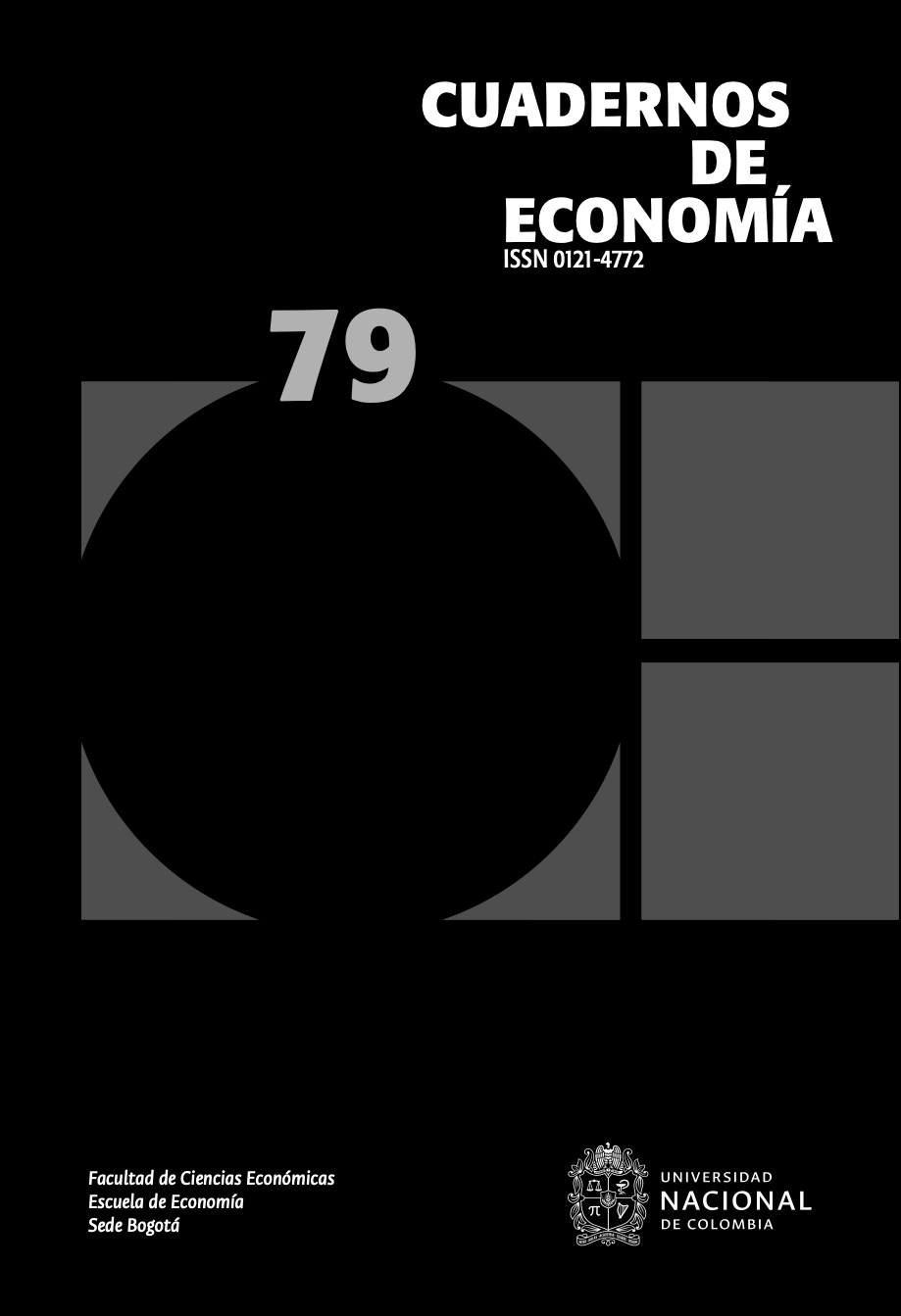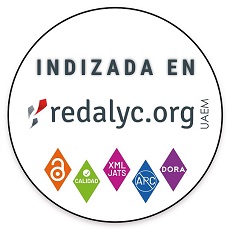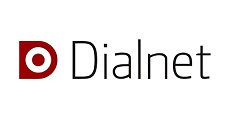Test Preparation and Students’ Performance: The Case of the Colombian High School Exit Exam
La preparación y el desempeño: el caso de las pruebas de Estado en Colombia
A preparação e o desempenho: o caso das provas de Estado na Colômbia
DOI:
https://doi.org/10.15446/cuad.econ.v39n79.77106Palabras clave:
exit exams, economics of education, test preparation, shadow education (en)examen de Estado, economía de la educación, preparación para el examen, educación sombra (es)
exame de Estado, economia da educação, preparação para o exame, educação sombra (pt)
Descargas
Standardized test scores play a central role in determining college admission decisions in both developed and emerging countries. For that reason, many courses are offered by schools and other educational institutions to prepare students for the exams. However, it is still unclear whether additional preparation has a positive and significant effect. The objective of this paper is to use the results of the Colombian high-school exit examination to gain a better understanding of the relationship between preparation and test results. Our results show that, on average, preparatory activities are associated with an increase of approximately 0.06 standard deviations in scores.
Los resultados de los exámenes estandarizados juegan un papel importante en las decisiones de admisión a la universidad en países desarrollados, emergentes y de bajos ingresos. Por esa razón, los colegios y otras instituciones educativas ofrecen cursos para preparar a los estudiantes. Sin embargo, no está claro si esta preparación adicional tiene un efecto positivo y significativo. Este artículo utiliza los resultados del examen de Estado colombiano para analizar la relación entre la preparación y el desempeño. Nuestros resultados muestran que, en promedio, las actividades de preparación están asociadas a un incremento de aproximadamente 0.06 desviaciones estándar en los puntajes.
Os resultados dos exames padronizados desempenham um papel importante nas decisões de admissão à universidade em países desenvolvidos, emergentes e de baixos ingressos. Por essa razão, os colégios e outras instituições educativas oferecem cursos para preparar aos estudantes. No entanto, não está claro se esta preparação adicional tem um efeito positivo e significativo. Este artigo utiliza os resultados do exame de Estado colombiano para analisar a relação entre a preparação e o desempenho. Nossos resultados mostram que, em média, as atividades de preparação estão associadas a um incremento de aproximadamente 0.06 desvios padrão nas pontuações.
Referencias
Angrist, J., Bettinger, E., Bloom, E., King, E., & Kremer, M. (2002). Vouchers for Private Schooling in Colombia: Evidence from a Randomized Natural Experiment. American Economic Review, 92(5). 1535-1558. doi:10.1257/000282802762024629.
Banerjee, A. V., Cole, S., Duflo, E., & Linden, L. (2007). Remedying Education: Evidence from Two Randomized Experiments in India. The Quarterly Journal of Economics, 122(3). 1235-1264. doi:10.1162/qjec.122.3.1235.
Belley, P. & Lochner L. (2007). The Changing Role of Family Income and Ability in Determining Educational Achievement. Journal of Human Capital, 1(1), 37-89. doi:10.1086/524674.
Bray, M. (2013). Shadow Education: Comparative Perspectives on the Expansion and Implications of Private Supplementary Tutoring. Procedia – Social and Behavioral Sciences, 77. 412-420. doi:10.1016/j.sbspro.2013.03.096.
Bray, M. (2014). The Impact of Shadow Education on Student Academic Achievement: Why the Research is Inconclusive and What Can Be Done about It. Asia Pacific Education Review, 15(3). 381-389. doi:10.1007/s12564-014-9326-9.
Briggs, D. C. (2002). SAT coaching, bias and causal inference (Doctoral dissertation). Retrieved from https://nepc.colorado.edu/sites/default/files/Briggs_SATCoachingBiasandCasualInference.pdf
Buchmann, C., Condron, D. J., & Roscigno, V. J. (2010). Shadow Education, American Style: Test Preparation, the SAT and College Enrollment. Social Forces, 89(2). 435-461. doi:10.1353/sof.2010.0105.
Byun, S. Y., & Park, H. (2012). The academic success of East Asian American youth: The role of shadow education. Sociology of education, 85(1), 40-60. doi: 10.1177/0038040711417009
Caliendo, M., & Kopeinig, S. (2008). Some Practical Guidance for the Implementation of Propensity Score Matching. Journal of Economic Surveys, 22(1), 31-72. doi:10.1111/j.1467-6419.2007.00527.x
Chetty, R., Friedman, J. N., Hilger, N., Saez, E., Schanzenbach, D. W., & Yagan, D. (2011). How Does your Kindergarten Classroom Affect Your Earnings? Evidence from Project STAR. Quarterly Journal of Economics, 126(4). 1593–1660. doi:10.1093/qje/qjr041.
Chica, S. M., Galvis, D. M., & Ramírez, A. (2011). Determinantes del rendimiento académico en Colombia: pruebas ICFES Saber 11º, 2009 (Documentos de Trabajo Economía y Finanzas No. 11-05). Medellín: EAFIT. Retrieved from https://repository.eafit.edu.co/handle/10784/580
Choi, A., Calero, J., & Escardíbul, J. O. (2011). Hell to Touch the SKY? Private Tutoring and Academic Achievement in Korea. In A. Caparrós (Ed.), Investigaciones de Economía de la Educación, (Vol. 6., pp. 18-134). Asociación de economía de la educación
Dang, H-A. (2007). The Determinants and Impact of Private Tutoring Classes in Vietnam. Economics of Education Review, 26(6). 683-698. doi:10.1016/j.econedurev.2007.10.003.
Davis-Kean, P. E. (2005). The Influence of Parent Education and Family Income on Child Achievement: The Indirect Role of Parental Expectations and the Home Environment. Journal of Family Psychology, 19(2), 294-304. doi: 10.1037/0893-3200.19.2.294
Domingue, B., & Briggs, D. C. (2009). Using linear regression and propensity score matching to estimate the effect of coaching on the SAT. Multiple Linear Regression Viewpoints, 35(1). 12-29.
Gamoran, A., & Long, D. A. (2007). Equality of Educational Opportunity A 40 Year Retrospective. In R. Teese, S. Lamb, M. Duru-Bellat, & S. Helme (Eds.), International Studies in Educational Inequality, Theory and Policy (pp. 23-47). Springer. doi:10.1007/978-1-4020-5916-2_2
Gómez Soler, S. C. (2016). Educational Achievement at Schools: Assessing The Effect of The Civil Conflict Using a Pseudo-Panel of Schools. International Journal of Educational Development, 49(C), 91-106. doi:10.1016/j.ijedudev.2016.02.004.
Gómez Soler, S. C. (2017). Civil Conflict and Educational Achievement: The Case of the Colombian Secondary School Exit Examination. Colombia Internacional, (92), 73-103. doi:10.7440/colombiaint92.2017.03.
Gurun, A., & Millimet, D. L. (2008). Does Private Tutoring Payoff? (IZA Discussion Paper No. 3637). Bonn: Institute for the Study of Labor (IZA). Retrieved from http://ftp.iza.org/dp3637.pdf
Häkkinen, I., Kirjavainen, T., & Uusitalo, R. (2003). School Resources and Student Achievement Revisited: New Evidence from Panel Data. Economics of Education Review, 22(3), 329-335. doi:10.1016/S0272-7757(02)00060-2
Hanushek, E. A. (1979). Conceptual and Empirical Issues in the Estimation of Educational Production Functions. The Journal of Human Resources, 14(3), 351-388. doi:10.2307/145575
Hanushek, E. A. (1986). The Economics of Schooling: Production and Efficiency in Public Schools. Journal of Economic Literature, 24(3), 1141-1177.
Haveman, R., & Wolfe, B. (1995). The Determinants of Children’s Attainments: A Review of Methods and Findings. Journal of Economic Literature, 33(4), 1829-1878.
Heinrich, C., Maffioli, A., & Vazquez, G. (2010). A Primer for Applying Propensity-Score Matching (Technical Notes No. IDB-TN-161). Washington: Inter-American Development Bank. Retrieved from https://publications.iadb.org/en/primer-applying-propensity-score-matching
Hernandez, O. 2011. Prácticas en instituciones escolares de la ciudad de Bogotá asociadas con la preparación de la pruebas Saber11 (2011. November). Retrieved from: http://www.icfes.gov.co/documents/20143/234037/Practicas+en+instituciones+escolares+de+bogota+asociadas+a+presentacion+saber+11.pdf
Hof, S. (2014). Does Private Tutoring Work? The Effectiveness of Private Tutoring: A Nonparametric Bounds Analysis. Education Economics, 22(4). 347-366. doi:10.1080/09645292.2014.908165.
Instituto Colombiano para la Evaluación de la Educación (2010). Orientaciones para el Examen de Estado de la Educación Media (pp. 30). Bogotá: ICFES. Retrieved from: http://www.icfes.gov.co/documents/20143/518161/Guia%20Saber%2011%202010%202.pdf
Jayachandran, S. (2014). Incentives to Teach Badly: After-School Tutoring in Developing Countries. Journal of Development Economics, 108. 190-205. doi:10.1016/j.jdeveco.2014.02.008.
Krueger, A. B. (2003). Economic Considerations and Class Size. The Economic Journal, 113(485), F34-F63. doi:10.1111/1468-0297.00098
Kuan, P-Y. (2011). Effects of Cram Schooling on Mathematics Performance: Evidence from Junior High Students in Taiwan. Comparative Education Review, 55(3). 342-368. doi:10.1086/659142.
Liu, J. (2012). Does Cram Schooling Matter? Who Goes to Cram Schools? Evidence from Taiwan. International Journal of Educational Development, 32(1), 46-52. doi:10.1016/j.ijedudev.2011.01.014.
Los Mejores Colegios de Colombia según Prueba Saber 11 en 2017. (2017. December). Revista Dinero. Retrieved from http://www.dinero.com/edicion-impresa/caratula/articulo/mejores-colegios-de-colombiasegun-prueba-saber-11-en-2017/253328
Murnane, R. J., & Willett, J. B. (2010). Methods Matter: Improving Causal Inference in Educational and Social Science Research. Oxford, UK: Oxford University Press.
Núñez, J., Steiner, R., Cadena, X., & Pardo, R. (2002). ¿Cuáles colegios ofrecen mejor educación en Colombia? (Documento CEDE 2002-03). Retrieved from: https://economia.uniandes.edu.co/components/com_booklibrary/ebooks/D2002-03.pdf
Ryu, D., & Kang, C. (2013). Do Private Tutoring Expenditures Raise Academic Performance? Evidence from Middle School Students in South Korea. Asian Economic Journal, 27(1). 59-83. doi:10.1111/asej.12002.
Tobón, D., Posada, H. M., & Ríos, P. (2009). Determinants of the Performance of the Schools in Medellin in the High-School Graduation-Year Test (ICFES). Cuadernos de Administración, 22(38), 311-333.
Todd, P. E., & Wolpin, K. I. (2003). On the Specification and Estimation of the Production Function for Cognitive Achievement. The Economic Journal, 113(485), F3-F33. doi:10.1111/1468-0297.00097
Wößmann, L. (2003). Schooling Resources, Educational Institutions and Student Performance: the International Evidence. Oxford Bulletin of Economics and Statistics, 65(2), 117-170. doi:10.1111/1468-0084.00045
Zhang, Y. (2013). Does private tutoring improve students’ National College Entrance Exam performance?—A Case Study from Jinan, China. Economics of Education Review, 32. 1-28. doi:10.1016/j.econedurev. 2012.09.008.
Zhang, Y., & Liu, J. (2016). The Effectiveness of Private Tutoring in China with a Focus on Class-Size. International Journal of Educational Development, 46. 35-42. doi:10.1016/j.ijedudev.2015.11.006.
Cómo citar
APA
ACM
ACS
ABNT
Chicago
Harvard
IEEE
MLA
Turabian
Vancouver
Descargar cita
CrossRef Cited-by
1. Christian Posso, Estefanía Saravia, Pablo Uribe. (2023). Acing the Test: Educational Effects of the SaberEs Test Preparation Program in Colombia. https://doi.org/10.32468/be.1237.
2. Yasamiyan Alolaywi, Shatha Alkhalaf, Badar Almuhilib. (2024). Analyzing the efficacy of comprehensive testing: a comprehensive evaluation. Frontiers in Education, 9 https://doi.org/10.3389/feduc.2024.1338818.
3. Christian Posso, Estefanía Saravia, Pablo Uribe. (2023). Acing the test: Educational effects of the SaberEs test preparation program in Colombia. Economics of Education Review, 97, p.102459. https://doi.org/10.1016/j.econedurev.2023.102459.
Dimensions
PlumX
Visitas a la página del resumen del artículo
Descargas
Licencia
Derechos de autor 2020 Cuadernos de EconomíaCuadernos de Economía a través de la División de Bibliotecas de la Universidad Nacional de Colombia promueve y garantiza el acceso abierto de todos sus contenidos. Los artículos publicados por la revista se encuentran disponibles globalmente con acceso abierto y licenciados bajo los términos de Creative Commons Atribución-No_Comercial-Sin_Derivadas 4.0 Internacional (CC BY-NC-ND 4.0), lo que implica lo siguiente:





















